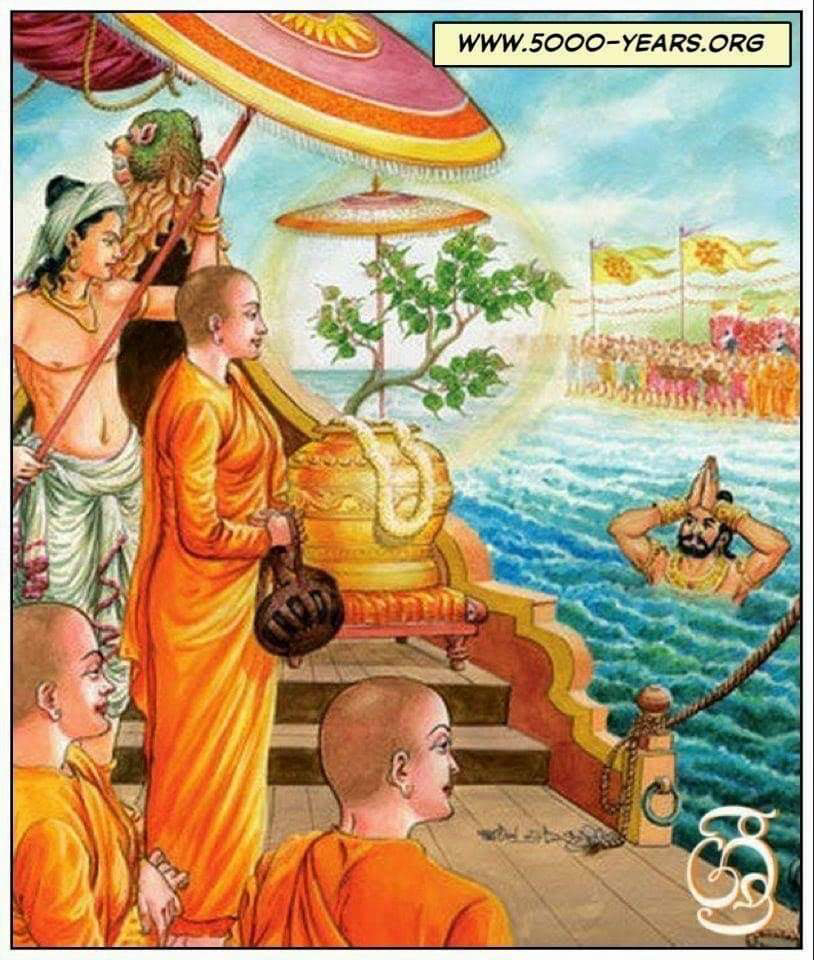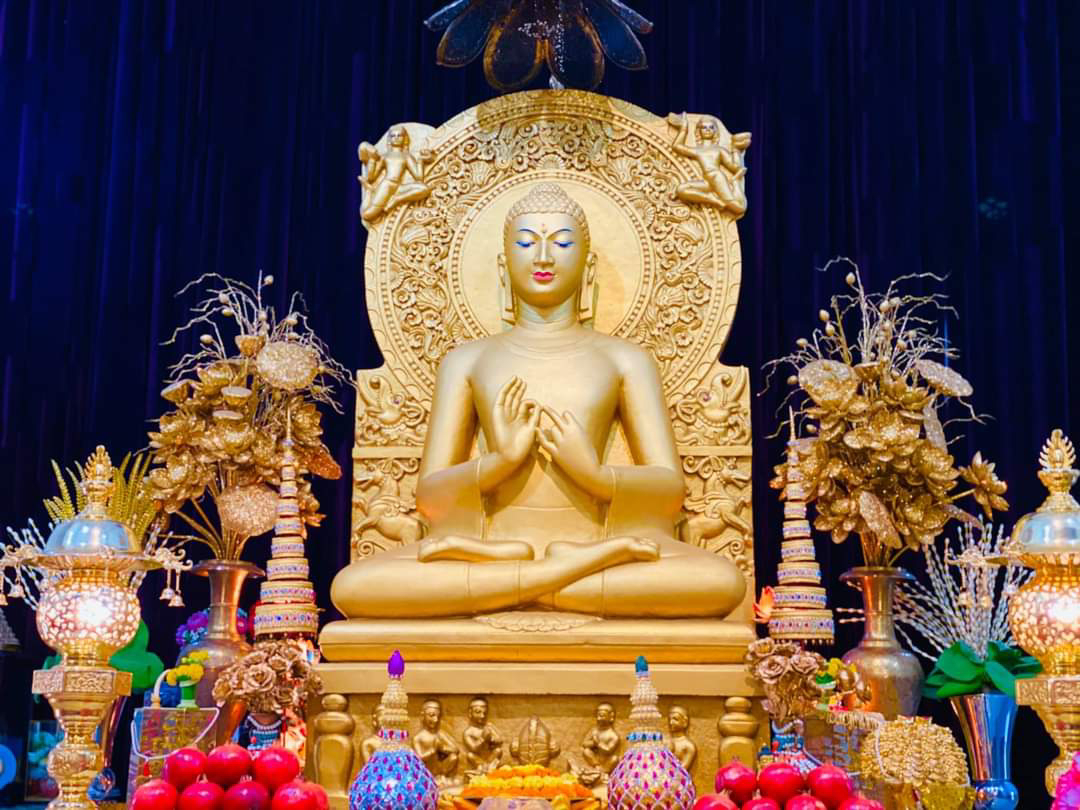8th January: Buddhist Flag Day and The Origin and Meaning of the Buddhist Flag.
8th January: Buddhist Flag Day and
The Origin and Meaning of the Buddhist Flag.
The Buddhist flag is a flag designed in the late 19th century as a universal symbol of Buddhism. It is used by Buddhists throughout the world.
The Buddhist flag is a modern creation and it was jointly designed by Mr J.R. de Silva and Colonel Henry Steele Olcott (American journalist) to mark the revival of Buddhism in Ceylon (presently Sri Lanka) in 1880. They designed a flag from the six colours of the aura that shone around the body and head of the Buddha after His Enlightenment. The Buddhist flag and American flag were draped on Colonel’s dead body in 1907 before his cremation.
The flag later came to symbolize the unity of Buddhists. Thereafter, it has been used worldwide and has been used in nearly 60 countries during Buddhist festive seasons, particularly during the Vesak celebrations. The Buddhist Flag was first hoisted in 1885 in Sri Lanka. It is a symbol of faith and peace used throughout the world to represent the Buddhist faith and to mark the revival of Buddhism. It was accepted as the International Buddhist Flag by the 1952 World Buddhist Congress.
There are five vertical stripes of red, yellow, blue, white and orange. The sixth colour is a compound of the first five, but for design purposes its five ingredients are all shown in small horizontal stripes on the flag.
The horizontal bars signify peace and harmony between all races through out the world. The vertical bars represent eternal peace within the world.
In simple terms, the Buddhist Flag implies that there is no discrimination of races, nationality, areas or skin colour; that every living being possess the Buddha Nature and all have the potential to become a Buddha. The colours symbolise the perfection of Buddhahood and the Dharma.
1. The Blue (nīla) light that radiated from the Buddha’s hair symbolises the spirit of Universal Compassion for all beings. It also represents the noble quality of “confidence” of the Buddha.
2. The Yellow (pīta) light that radiated from the Buddha’s epidermis symbolises the Middle Path which avoids all extremes and brings balance and liberation. It also represents the noble quality of “holiness” of the Buddha.
3. The Red (lohitaka) light that radiated from the Buddha’s flesh symbolises the blessings that the practice of the Buddha’s Teaching brings. It signifies achievement, wisdom, virtue, fortune and dignity. It also represents the noble quality of “wisdom” of the Buddha.
4. The White (avadāta) light that radiated from the Buddha’s bones and teeth symbolises the purity of the Buddha’s Teaching and the liberation it brings. It also represents the noble quality of “purity” of the Buddha.
5. The Orange (mañjiṣṭhā) light that radiated from the Buddha’s palms, heels and lips symbolises the unshakable Wisdom of the Buddha’s Teaching. It also represents the noble quality of “absence of desire” of the Buddha.
The Origin and Meaning of the Buddhist Flag
Origin of the Buddhist Flag
The Buddhist Flag, first hoisted in 1885 in Sri Lanka, is a symbol of faith and peace used throughout the world to represent the Buddhist faith.
There appears to have been a controversy over as to who designed the Buddhist Flag.
Some give the credit to Henry Steele Olcott, a retired American Army Colonel to Sri Lanka in May 1880.
Olcott embraced Buddhism and joined the Buddhist revivalist movement and pioneered Buddhist education. He initiated the establishment of close to 400 Buddhist schools and colleges in Sri Lanka. Ananda, Nalanda, Mahinda and Dharmaraja stand as monuments to his pioneering efforts.
In 1884, the Buddhists succeeded in getting the British rulers to declare Vesak Poya Day as a Public Holiday as from May 1885. At this stage the Buddhists established the ‘Colombo Committee’, and Olcott was indeed one of its members, but there were also more than ten other eminent members of the Sri Lankan laity and sangha.
This committee set about the task of evolving a Buddhist Flag to be hoisted on Vesak Full Moon Day, 28th May 1885, the day declared as a Public Holiday, for the first time.
Thus it is this committee that jointly designed the Buddhist Flag and the then Secretary of the Committee presented it to the public as approved by the ‘Colombo Committee’ on 17th April 1885.
The Buddhist Flag, so designed, was hoisted for the first time on 28th May 1885, Vesak Full Moon Day, by Ven. Migettuwatte Gunananda Thera at Deepaduththaramaya in Kotahena.
On a suggestion by Olcott the flag was modified to be of the normal size of National Flags. The Buddhist Flag so modified was hoisted on Vesak Full Moon Day in 1886. It remains unchanged to this day and is used by all the traditions and schools of Buddhism throughout the world.
Professor G .P. Malalasekera was instrumental in making it the Flag of the Buddhist World. His proposal at the meeting of World Federation of Buddhists held in Kandy on 25th May 1950, to accept it as the official Buddhist Flag.
It was accepted as the International Buddhist Flag by the 1952 World Buddhist Congress.
Meaning of the Colours of the Buddhist Flag
The original design's six colours; Blue (nila), Yellow (pita), Red (lohita), White (odata), Scarlet (manjestha), and the mixture of these six colours (prabaswara) of the flag represented the colours of the aura that emanated from the body of the Buddha when He attained Enlightenment under the Bodhi Tree.
The original colour of Scarlet, was subsequently altered to Orange.
The Horizontal Stripes represent the races of the world living in harmony and the Vertical Stripes represent eternal world peace.
The colours symbolize the perfection of Buddhahood and the Dharma.
The Blue light that radiated from the Buddha's hair symbolises the spirit of Universal Compassion for all beings.
The Yellow light that radiated from the Buddha's epidermis symbolises the Middle Way which avoids all extremes and brings balance and liberation.
The Red light that radiated from the Buddha's flesh symbolises the Blessings that the practice of the Buddha's Teaching brings.
The White light that radiated from the Buddha's bones and teeth symbolises the Purity of the Buddha's Teaching and the Liberation it brings.
The Orange light that radiated from the Buddha's palms, heels and lips symbolises the unshakable Wisdom of the Buddha's Teaching.
The Combination Colour, on the fly, symbolises the universality of the Truth of the Buddha's Teaching.
Therefore, the overall flag represents that regardless of race, nationality, division or colour, all sentient beings possess the potential of Buddhahood.
A more modern, contemporary definition of the six colors is given as:
1. Blue: signifying the concept of loving kindness and peace in Buddhism
2. Yellow: signifying the Middle Path, that is, the complete absence of form and emptiness
3. Red: signifying achievement, wisdom, virtue, fortune and dignity.
4. White: signifying purity, emancipation, that the Dharma will always exist regardless of time or space.
5. Orange: The essence of Buddhism which is full of wisdom, strength and dignity.
6. The Combination of these five colors symbolizes that it is the one and only Truth.










Comments
Post a Comment